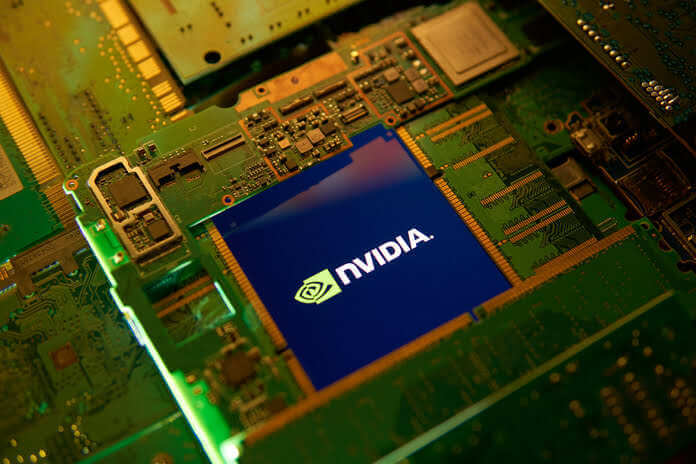Nvidia (NASDAQ:NVDA) continues to take blows, with the latest coming from the US government. Nvidia is now faced with balancing direct trade war demands from the government after failing to recover from a financial mudslide induced by macroeconomic pressures, as seen by its dismal quarter and guidance. But this isn’t just Nvidia’s war. While AMD (NASDAQ:AMD) looks safe for the time being in terms of product, the market is already calculating Trade War 2.0 ripple effects across the semiconductor sector and, in some cases, beyond. The difficulty is that the market sees the government’s decision as the start of the next trade war, in which completed goods, not just raw materials, are targeted.
Trade War 2.0
WFE (wafer fab equipment) firms are putting out the welcome mat as chip makers join the trade war club. Not long ago, WFE firms bore the brunt of China’s trade war in a technology. But that was under a different government. The present government is taking it a step further by prohibiting the sale of sophisticated semiconductor goods outright, rather than merely the capacity to create them.
Things can’t get much worse, according to Nvidia. Macroeconomic considerations are placing great strain on its retail-facing gaming segment, as the outlook for the gaming market remains bleak. Of course, I’m not blaming crypto mining, which isn’t the fundamental cause of Nvidia’s problems. Still, I’ll get to it in another piece.
Nvidia’s Immediate Woes
The problem, according to Nvidia, isn’t the government’s trade restriction specifically calling out its products – while this degree of precision is alarming – but rather that the items being called out belong to its strongest segment – the data center. The Data Center division has been the heavy lifter in containing Nvidia’s financial disaster. While gaming and retail income are down, data center revenue is increasing, even sequentially. However, with the US department focusing on the A100 and impending H100, the company’s product performance and financials have been targeted.
This puts the corporation in a bind, as it believes $400 million is at risk owing to the items’ eventual destination in China.
The difficulty is that these items, at least the earlier A100, are already in their possession. Furthermore, China and Russia are almost certainly already reverse engineering and stealing product designs and maybe secrets (remember, Nvidia had a supposed breach of its designs and source code). So when you put the jigsaw pieces together, the picture on the puzzle box begins to take shape.
The original Trade War prohibited China from producing the chips required to manufacture these final accelerator devices.
AMD’s Non-immediate Woes, But Immediate Realization
So far, the business claims that the directive has had no meaningful impact; their MI100 accelerator product is unaffected, according to management. Despite this, the company’s stock has declined and accelerated since the filings. So, even when the corporation finds no meaningful impact, the market isn’t absolving it.
Why is this the case?
The short version is: Will there be something short that will influence AMD’s sales?
But, more importantly, this has highlighted an essential competitive dispute. Even though the government has asked both businesses to confine their goods to China, only Nvidia perceives a significant impact. This suggests AMD’s data center accelerator product is either not competitive enough to be utilized for military AI work (i.e., not in demand in China), or it has manipulated its customer sales channel sufficiently to prevent these items from being sold straight into China.
If the latter, AMD should be applauded for its excellent execution in recent years to lessen reliance on direct Chinese sales. In this situation, AMD has a competitive edge regarding the end market sales chain. However, if it’s the former, it validates what most people already knew: AMD isn’t competitive in terms of AI in the data center. That’s not to suggest its server CPUs aren’t competitive and gaining market share – I believe they are – but Nvidia’s prowess remains unrivaled for AI acceleration – where large bucks and fat margins are found.
However, AMD’s sales to China were the second largest area, trailing only the United States in FY21. Furthermore, AMD’s Chinese sales accounted for 25% of total revenue, increasing 76% from 2010 to 2020. This demonstrates that AMD isn’t completely immune to Chinese income. Granted, the percentage tied to AI processing is unknown, but the initial glance warrants further investigation and, at the very least, alarm.
Summarizing The Gist Of It
Nvidia has a short-term issue: its AI products exceed the barrier imposed by the US government for sales to China (at least without verification that they are not diverted to military R&D). A bar that appears to be established by its A100 performance. According to the corporation, this means that $400M is in danger of being lost each quarter, not just the current quarter (which is only the company’s present emphasis in the filing).
AMD’s problem is not that it is losing money in the current quarter but that the performance of its AI accelerators is subpar. However, it’s possible to reach the performance threshold where it would invoke the prohibition on sales to China and Russia is much more problematic. The silver lining is that it can push toward and over the performance criterion while still attempting to sell the items differently to prevent the ban in advance (not necessarily circumventing it directly, but managing its sales chain in a way not to trip any alarms). This is where AMD has an advantage over Nvidia.
But the simple truth is that the present government has taken the first significant step toward inciting Trade War 2.0, sending markets into a tailspin as they wait to see what comes next to cripple US industries. Of course, each of these equities may stabilize as the markets understand the present implications. Still, the volatility will not abate anytime soon.
This entails profiting on downward overreactions and dollar cost averaging into equities. For me, this implies strengthening my AMD position since the firm has the most steady revenue of the two, and truly of all chip manufacturers, including Micron (MU), Western Digital (WDC), and Intel (INTC). While AMD’s AI products are substandard, knowing its financials are safer is the true achievement in the current market scenario.
Featured Image- Megapixl @G0d4ather















